demolished james higgie building lives on through salvaged ornament and images, part 3
This entry was posted on December 20 2017 by Eric
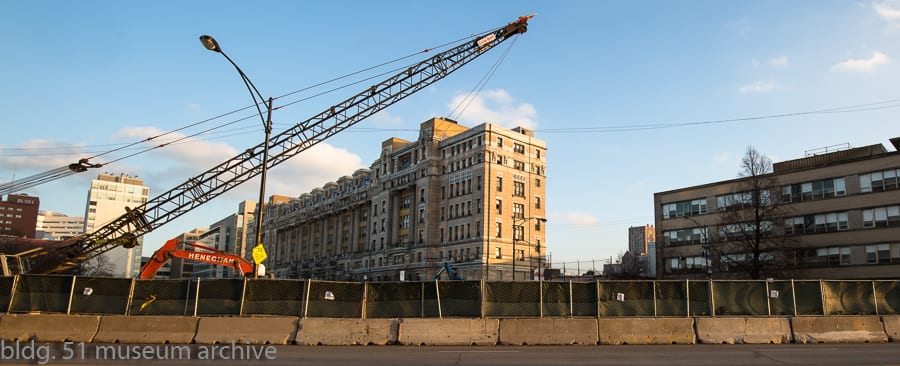
by eric j. nordstrom and ornament chicago
By the 1940s onward the J.L. Higgie building had begun a protracted period of what could be considered gradual decline. In this postcard from the 1940s one notes the classic bell shaped roofs from the earlier 1920s photo are now missing, and by the time of the black and white photo circa 1946, any cornice that may have existed has been removed, and brickwork around the roofline no longer appears to be original. Nonetheless, the building was still structurally sound and persisted into the post World War II era.
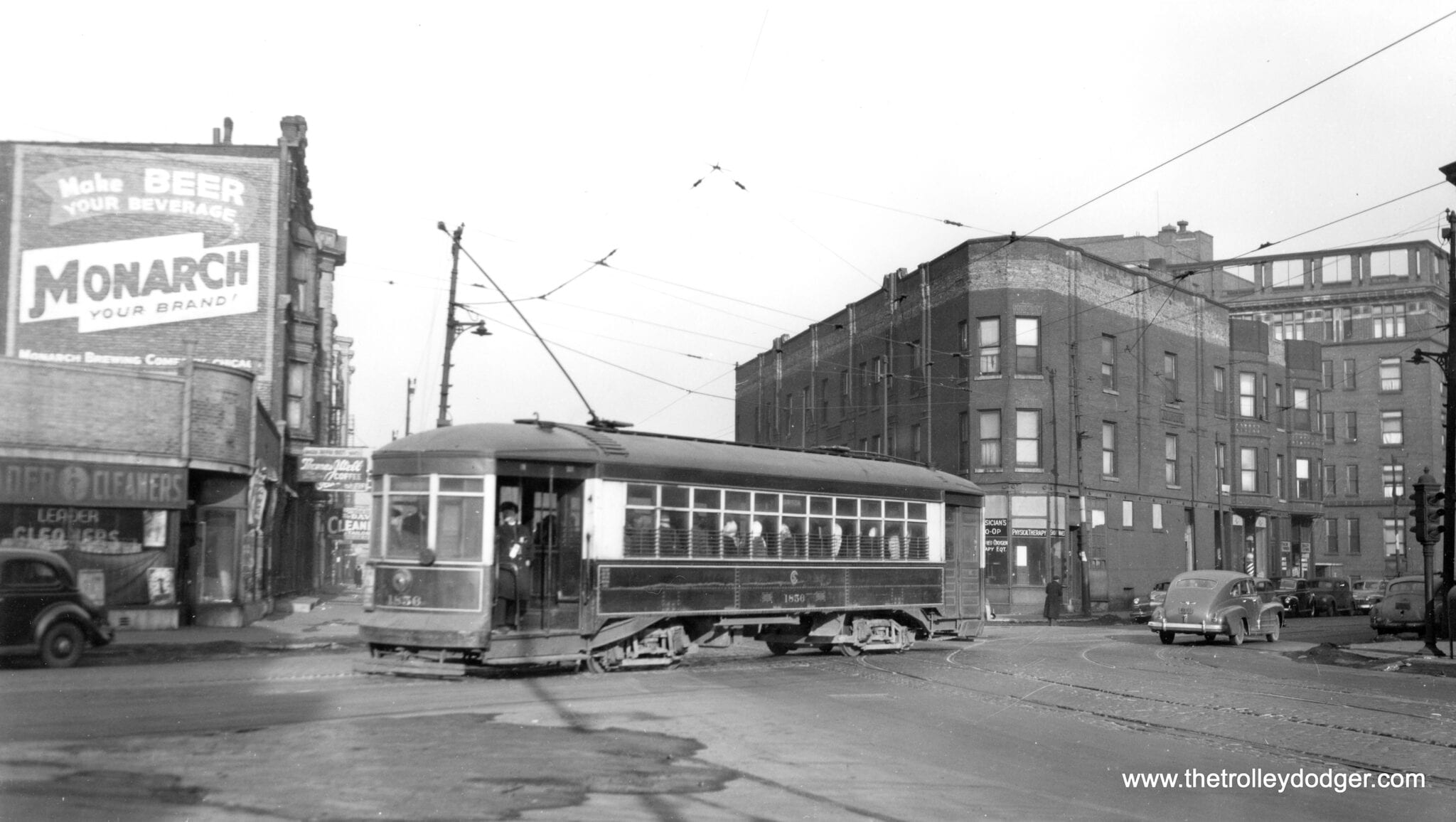
In the context of Cook County Hospital, which was right across Harrison Street, the building served an important social and practical function for those who worked nearby. It was an informal satellite building, that “third place” to which one could go to catch a quick bite to eat, to board close to the hospital yet psychologically escape its formal borders.
No doubt conversations ran the gambit from medical breakthroughs to difficult procedures to idle gossip at the “hospital restaurant” across the street and one can easily imagine interns emerging from the cherub flanked Beaux Arts facade of “County” and trudging across Harrison Street for a few precious hours sleep before returning bleary eyed for the next shift. This building provided accessibility and accommodation for its visitors and tenants and gave them respite in a familiar place from which to part from the hospital, if only temporarily. In that sense it is an important but previously unrecognized facet of the history of the Illinois Medical District.
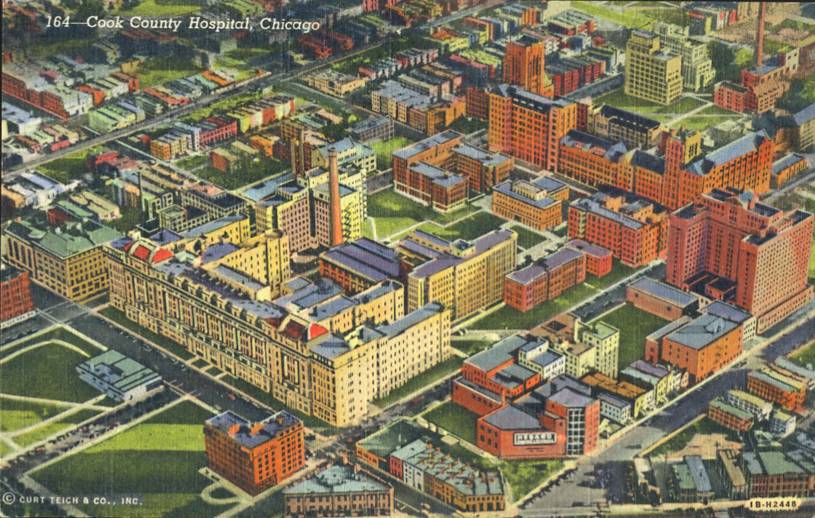
Cook County Hospital, Chicago. Curt Teich & Co.
Since I was not given access to the site at the time the walls came down, only a fragment of the terra cotta was salvaged. I haven’t been able to examine it fully yet, but it appears to be a hybrid of pressed brick and terra cotta; the amount of grog in the panels is unusually high. The cavities and webbing are strange; but cut with such precision. The packer did not leave a single finger indentation, nor are there holes for the steel anchors. Much like this unique building, they remain a mystery for further investigation, and my earlier assumption that they were created by Northwestern Terra Cotta may be challenged.

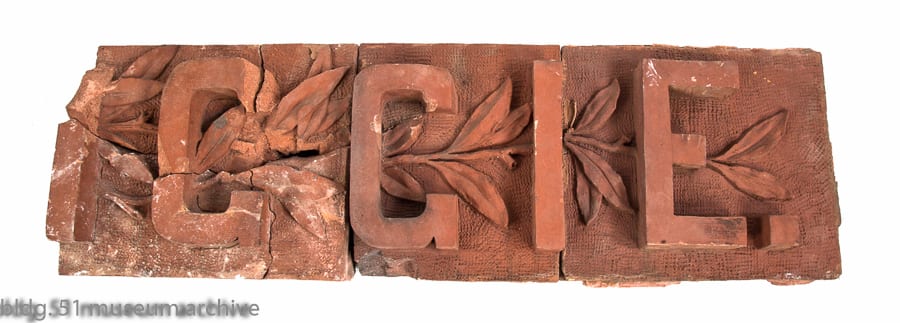
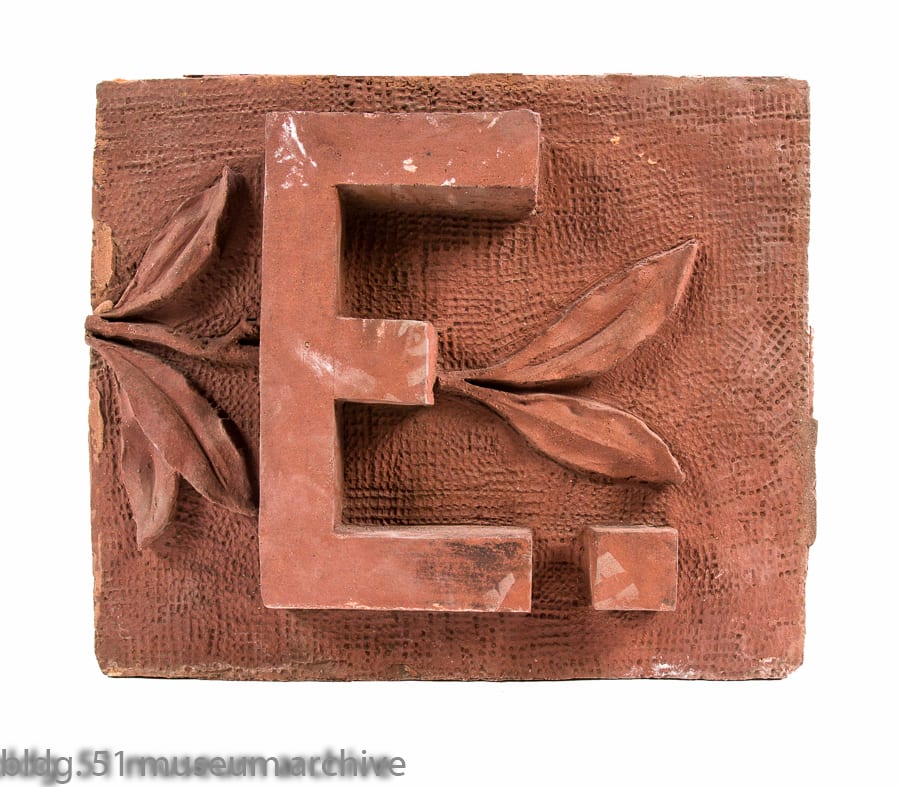
In a twist of irony and a tribute to Higgie, the three letters I captured, “GIE”, are a verb - the Scottish form of “give”. And this building did give, for the 131 years of its life; providing shelter for the many doctors who boarded here, shelves to the medical books that were published here. It gave comfort to those who frequented Henry Rosengarden’s small bakery in 1899 or C.C. Harris’s kitchen counter in 1905 or the Red Castle restaurant in 2010, passage to those who breathed their last breathe in this building, a wall to lean on for those who waited for the #7 Harrison bus, or a makeshift home for those who just sought a bit of shelter on the recessed stoop of a familiar building.
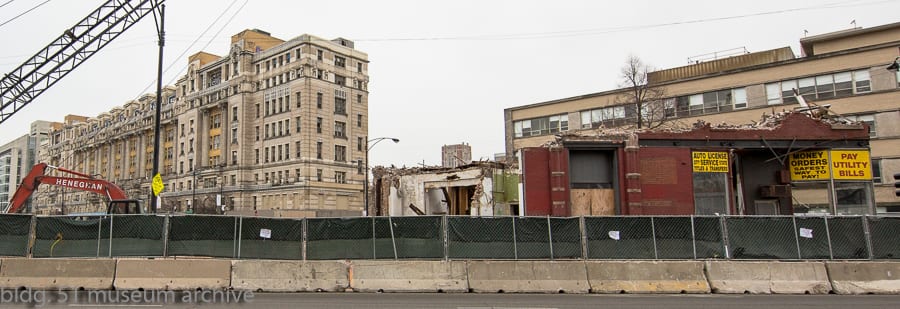
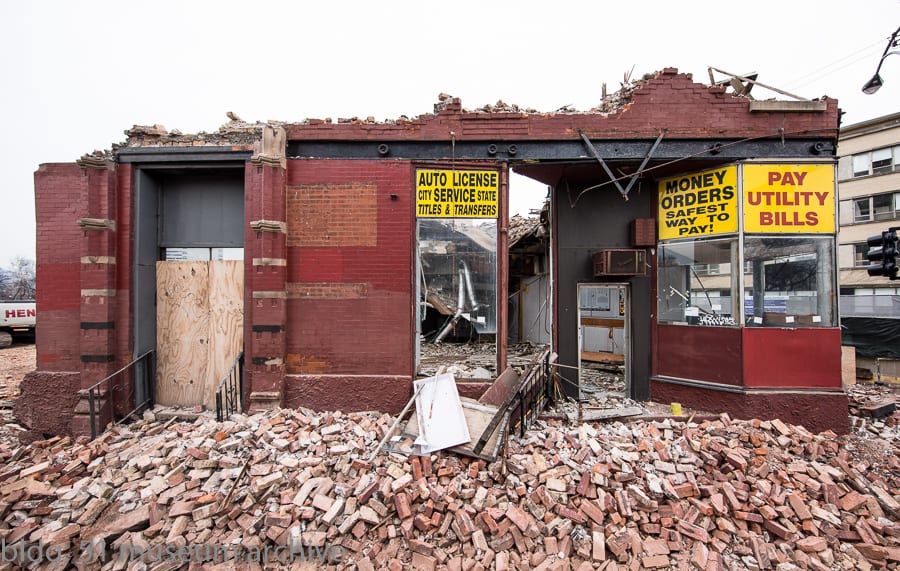
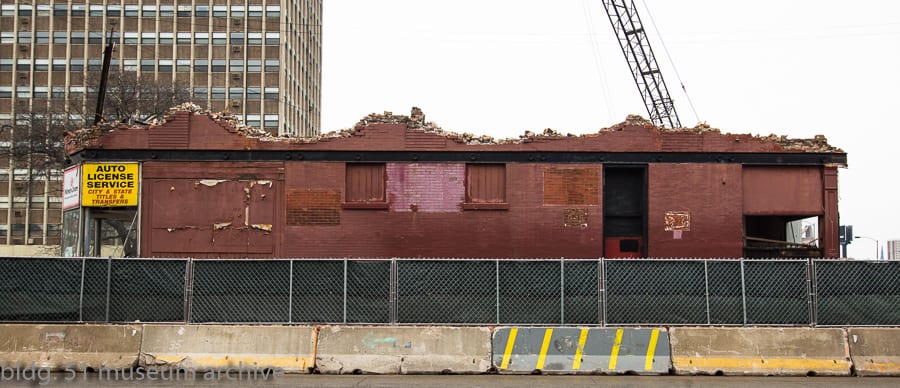
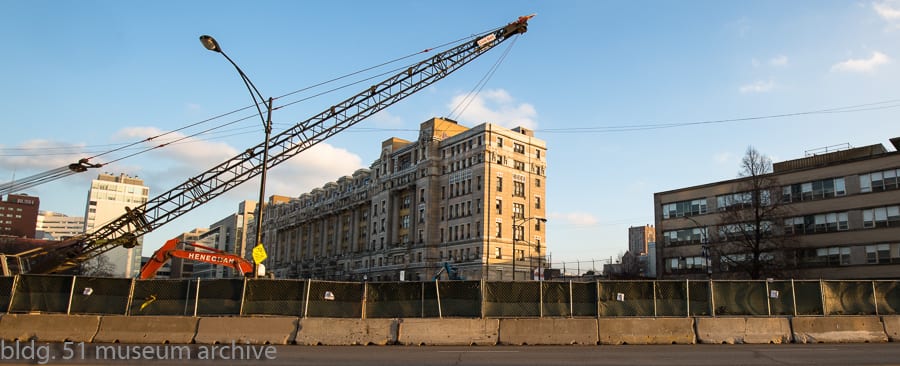 In the end this building gave itself up as they all do, but it did not give up easily. It took an entire week to demolish this wedge shaped building that has stood its ground through the Chicago street renumbering, the Great Depression, both world wars, the rise and fall of Cook County Hospital, and the transformation of the neighborhood several times over, but in the end it fell just like many other forgotten buildings fall; an altered impression of its former self, but an important building now lost to history.
In the end this building gave itself up as they all do, but it did not give up easily. It took an entire week to demolish this wedge shaped building that has stood its ground through the Chicago street renumbering, the Great Depression, both world wars, the rise and fall of Cook County Hospital, and the transformation of the neighborhood several times over, but in the end it fell just like many other forgotten buildings fall; an altered impression of its former self, but an important building now lost to history.
on 5-17-2018, i received the following email:
To Whom It May Concern,
I have been doing some research on my family tree and have found that James Lyle Higgie was my great grandfather. My grandfather was Harold Horace Higgie, Sr. . They are all buried in the family plot at Rose Hill cemetery in Chicago. On a separate note and oddly enough, my father, Harold Horace Higgie Jr. (and my mother) are buried in Rose Hill cemetery in Akron, Ohio.
A few years ago, I visited the Chicago cemetery and was amazed at the history. I also drove to the JL Higgie building and snapped a few pictures. I was saddened to hear this old flatiron building was demolished recently - progress comes at a price.
I would be very much interested in any information you could provide about my great grandfather and anything that was found during the demolition. Were the terra cotta plaques or any other decor salvaged?
I appreciate any information you could provide.
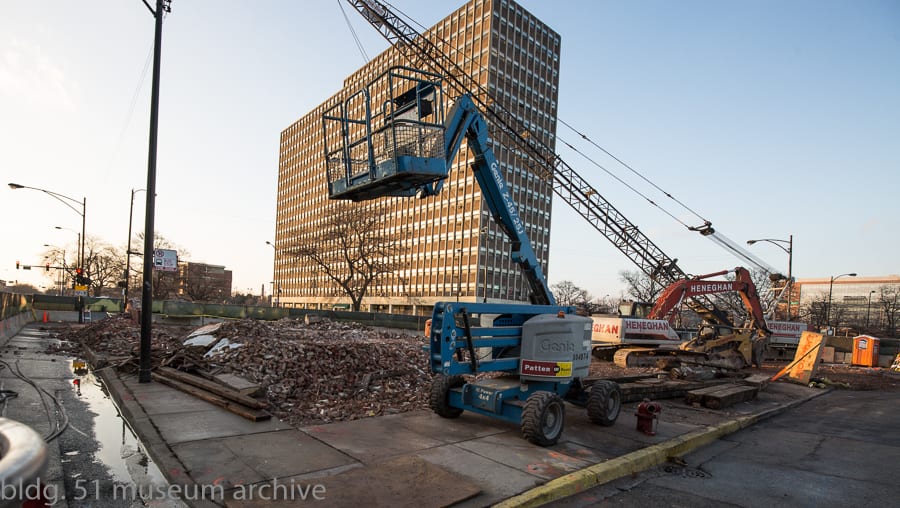
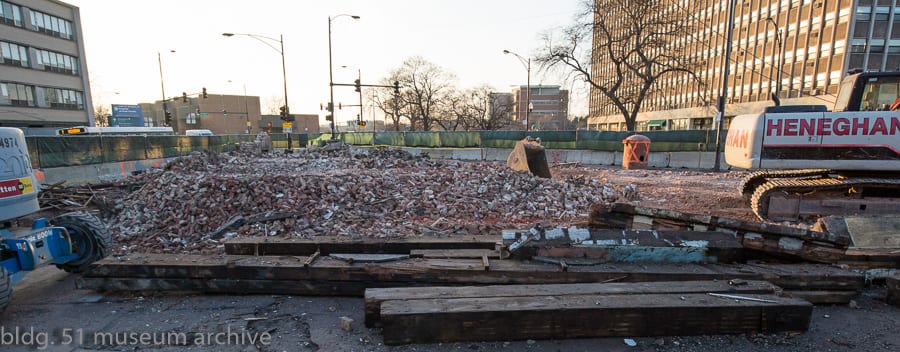
This entry was posted in , Miscellaneous, Salvages, Bldg. 51, Events & Announcements, Featured Posts & Bldg. 51 Feed on December 20 2017 by Eric
WORDLWIDE SHIPPING
If required, please contact an Urban Remains sales associate.
NEW PRODUCTS DAILY
Check back daily as we are constantly adding new products.
PREMIUM SUPPORT
We're here to help answer any question. Contact us anytime!
SALES & PROMOTIONS
Join our newsletter to get the latest information
























